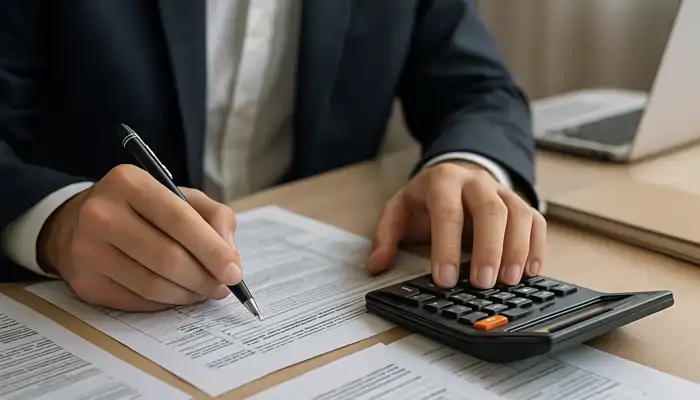How to Invest in Commercial Real Estate in Spain: An Analytical Overview for Beginner Investors
Investing in commercial real estate in Spain is an attractive opportunity for beginner investors however it is accompanied by a number of complications. Many potential investors face a lack of reliable information legal difficulties high taxes and additional expenses as well as risks related to unscrupulous intermediaries and inexperience in property evaluation. This article discusses the main investment strategies key financial indicators and practical recommendations for solving the most pressing issues.
Main Investment Strategies
The Spanish market features three main investment strategies in commercial real estate:
- Purchase at the construction phase with subsequent short-term rental. In this scheme the investor acquires the property in pre-sale at a fixed price and divides the payment into several stages (for example 30 percent initial payment 20 percent after six months and 50 percent upon commissioning the property). The main income is generated by capital appreciation the increase in the property value as well as income from short-term rental during the tourist season.
- Purchase at the construction phase with subsequent long-term rental. This option is characterized by stable profitability of approximately 6.6 to 7.6 percent per year before taxes. The advantage is the predictability of rental income however the disadvantage is the inability to personally use the property and the limited flexibility to exit the investment.
- Short-term rental with subsequent resale. In this case the investor after several years usually around 5 years of operation sells the property securing profit due to a significant increase in property value. This strategy can provide profitability of up to 96 percent over 5 years approximately 19 percent per year but requires a thorough market analysis optimal timing for resale and consideration of expenses for renovation and interior updating.
Investor Pain Points and Solutions
The main issues faced by beginner investors are:
- Lack of information and superficial analysis. Many investors rely solely on recommendations from agents which can lead to an incorrect evaluation of the property. The solution is to conduct an independent appraisal a detailed analysis of the project financial model and a comprehensive study of market trends.
- Legal difficulties. The registration of property rights in Spain is associated with high taxes approximately 10 percent of the transaction value and additional expenses up to 3 percent. To minimize risks it is advisable to engage experienced lawyers specializing in real estate to avoid lengthy legal proceedings and legal issues.
- Dishonesty of agents and lack of transparency. Not all agents provide complete information about the properties which may lead to an incorrect valuation of the deal and overpayment. In such cases the investor should work only with verified professionals and conduct an independent analysis of the deal conditions.
- Risks associated with the use of financial leverage. Financial leverage (financial leverage) is a tool that allows the use of borrowed funds to increase the investment volume. It is important to calculate indicators such as EBIT (earnings before interest and taxes) and ROI (return on investment) to assess the real effectiveness of the investment.
Regional factors also play an important role. For example on the Costa Blanca there is stable economic growth of around 7 to 10 percent per year which contributes to increased property capitalization and creates additional opportunities for profit.
Key Investment Efficiency Indicators
The following indicators are used to assess the efficiency of the project:
- EBIT (earnings before interest and taxes) allows an evaluation of the operational efficiency of the property without taking into account external financial costs.
- ROI (return on investment) shows the ratio of profit obtained to the capital invested and helps determine how efficiently own funds are used.
For example if a property is purchased for 200 thousand euros with payments in several stages and after two years its value increases due to capital appreciation and regional growth (approximately between 14 and 20 percent) the final price may reach 268 thousand euros. Additional income from rental increases the overall investment efficiency allowing the investor to obtain a satisfactory return.
Using Financial Leverage
Financial leverage (financial leverage) is a tool that allows the use of borrowed funds to increase the investment volume. When used wisely this mechanism contributes to the increase of ROI (return on investment) since the investor can purchase a more expensive property by investing a smaller share of own funds. However increasing the debt load requires careful control of expenses and interest rates.
Consider a practical example: if a property is acquired for 200 thousand euros and the investor contributes 40 thousand euros of own funds with the remainder financed by a mortgage then with an annual income from the property of 2 thousand euros before expenses the calculated ROI (return on investment) would be approximately 30 percent. This high indicator demonstrates potential effectiveness although an increased debt burden may lead to risks in case of a decline in income or unforeseen expenses.
Conclusions and Recommendations
Investing in commercial real estate in Spain offers high potential provided that a comprehensive approach and thorough analysis are applied. The key success factors are:
- Conducting an independent appraisal and in-depth market analysis to select the optimal property;
- Working with experienced lawyers and professional consultants to properly formalize the transaction;
- Careful calculation of financial indicators including EBIT (earnings before interest and taxes) and ROI (return on investment) especially when using financial leverage;
- Considering regional factors and the dynamics of economic growth which contribute to increased property capitalization;
- Developing a detailed financial model that accounts for all expenses taxes and additional costs.
Special attention should be given to obtaining the tourist license required for the legal rental of properties in resort areas. By following all recommendations the investor not only preserves but also significantly multiplies the invested funds. Market analysis careful risk management and the use of modern financial instruments allow for stable income and the creation of a reliable investment portfolio.
Thus successful investment in commercial real estate in Spain becomes an achievable goal for those who are willing to conduct a thorough analysis seek professional support and develop an optimal strategy. A comprehensive approach to property evaluation careful study of deal conditions and prudent use of borrowed funds are key to obtaining stable and high retur








